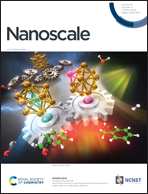Enhancing oxygen evolution reactions in nanoporous high-entropy catalysts using boron and phosphorus additives†
Abstract
High-entropy alloy (HEA) catalysts are a novel area of research in catalysis that shows great potential for more efficient catalyst development. Recent studies have highlighted the promise of HEA catalysts in applications such as water-splitting electrodes, owing to their better stability and ability to improve catalytic activity compared to traditional catalysts. Dealloying, which is a process that removes elements from metallic alloys, is a popular method for creating nanoporous HEA catalysts with large surface areas and interconnected structures. This study focused on the fabrication of nanoporous HEA catalysts with boron and phosphorus additives for the oxygen evolution reaction (OER) in water splitting. Combining B or P with noble metals such as Ir or Ru enhances the OER activity and durability, showing synergistic interactions between metals and light elements. This study used electrochemical evaluations to determine the best-performing catalyst, identifying CoCuFeMoNiIrB as the best catalyst for OERs in alkaline media. X-ray photoemission spectroscopy (XPS) analysis revealed that B effectively shifted the transition elements to higher valence states and induced excess electrons on the Ir–B surface to promote OER catalysis.



 Please wait while we load your content...
Please wait while we load your content...